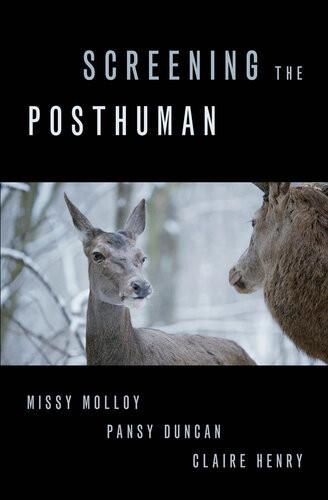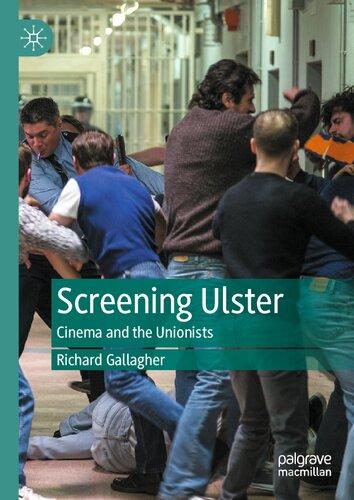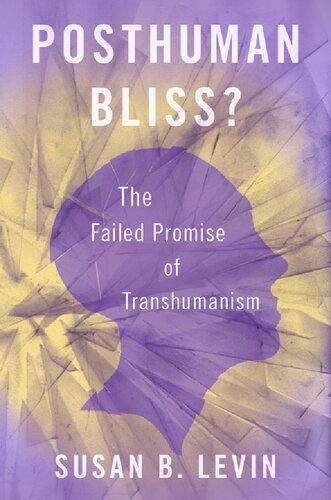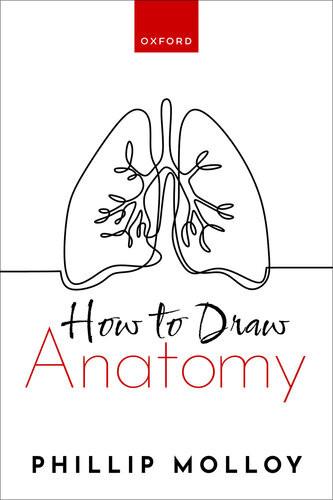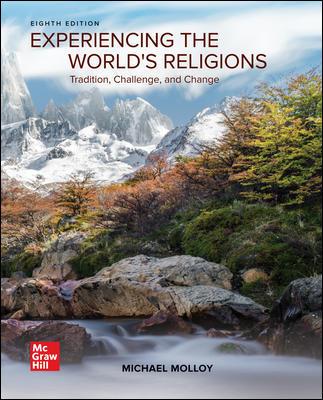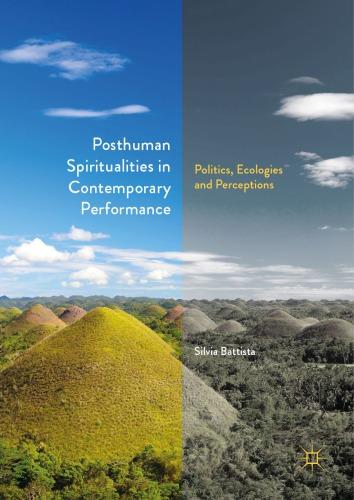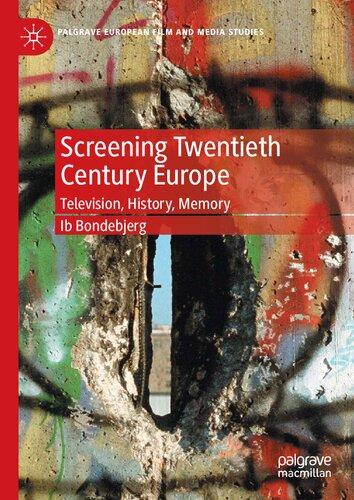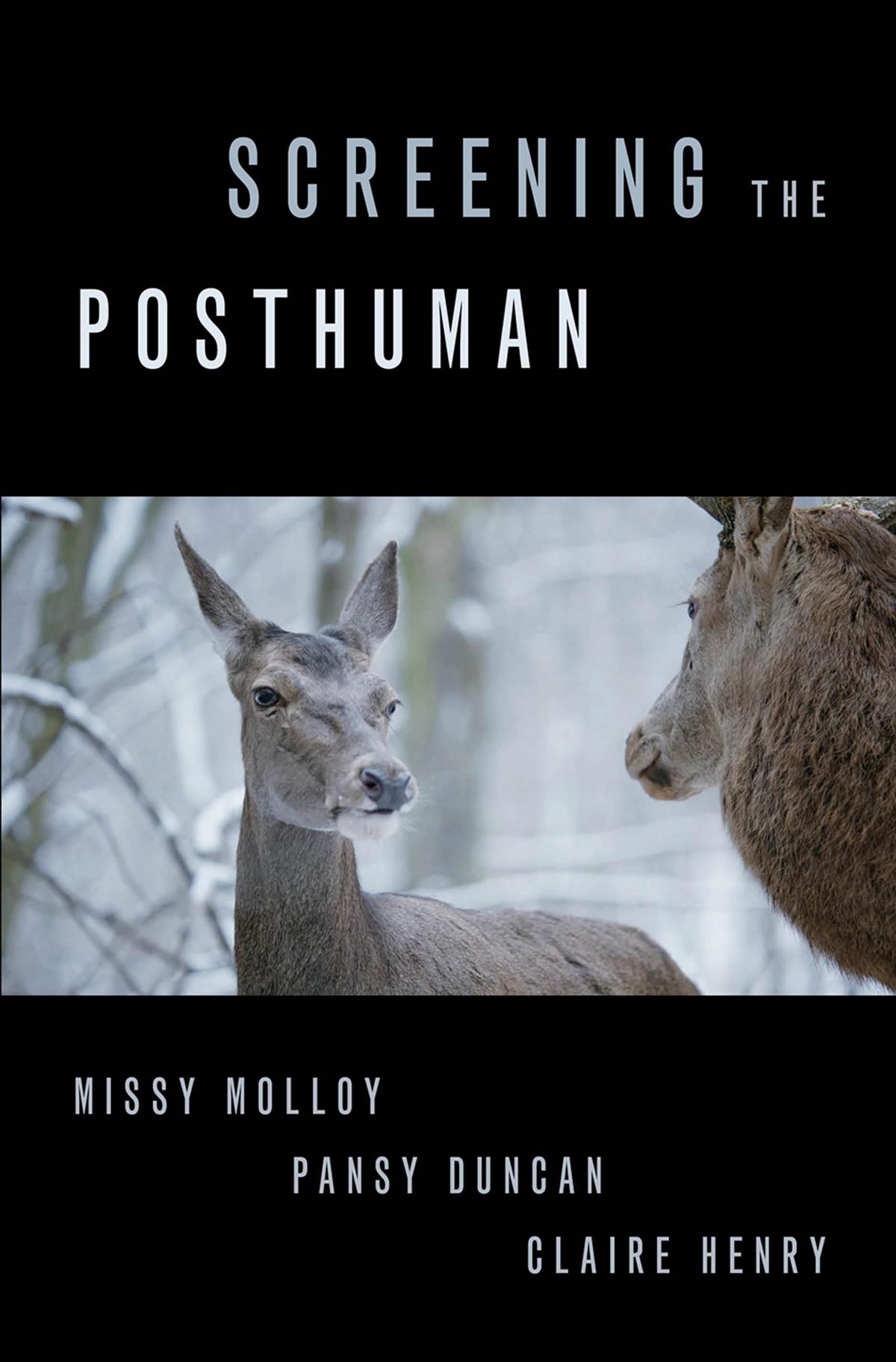Screening the Posthuman
MISSY MOLLOY, PANSY DUNCAN, AND CLAIRE HENRY
Oxford University Press is a department of the University of Oxford. It furthers the University’s objective of excellence in research, scholarship, and education by publishing worldwide. Oxford is a registered trade mark of Oxford University Press in the UK and certain other countries.
Published in the United States of America by Oxford University Press 198 Madison Avenue, New York, NY 10016, United States of America.
© Oxford University Press 2023
All rights reserved. No part of this publication may be reproduced, stored in a retrieval system, or transmitted, in any form or by any means, without the prior permission in writing of Oxford University Press, or as expressly permitted by law, by license, or under terms agreed with the appropriate reproduction rights organization. Inquiries concerning reproduction outside the scope of the above should be sent to the Rights Department, Oxford University Press, at the address above.
You must not circulate this work in any other form and you must impose this same condition on any acquirer.
CIP data is on file at the Library of Congress
ISBN 978–0–19–753857–9 (pbk.)
ISBN 978–0–19–753856–2 (hbk.)
ISBN 978–0–19–753859–3 (epub.)
DOI: 10.1093/oso/9780197538562.001.0001
Contents
Acknowledgments
Introduction
PansyDuncan,ClaireHenry,andMissyMolloy
1. Posthuman as Genre
PansyDuncan,ClaireHenry,andMissyMolloy
2. Envisioning Posthuman Apocalypse
MissyMolloy
3. From Cyborg Theory to Posthuman Mothers
MissyMolloy
4. Queer Posthumanism: Figures, Fluidity, and Fluids
ClaireHenry
5. The Cinematic Convergence of Posthuman and Crip Perspectives
PansyDuncanandMissyMolloy
6. Post-anthropocentrism: Rejecting Human Exceptionalism
ClaireHenry
7. The Eco-material Posthuman in the Age of the Anthropocene
PansyDuncan
8. Conclusion
PansyDuncan,ClaireHenry,andMissyMolloy
Bibliography
Index
Acknowledgments
This book is dedicated to the biotechnologies that helped to make and protect our human babies, Leo, Sigourney, and Wolfgang, during the writing of this book. It is inspired by the theorists and filmmakers whose works compelled us to track the fascinating conversation between critical posthumanism and cinema, with Ildikó Enyedi and Lynette Wallworth deserving of special mention for their generosity in sharing images from their films with us.
We are enormously grateful to Norm Hirschy and Lauralee Yeary at Oxford University Press (OUP) for their interest in and support of this book. We would also like to thank the anonymous reviewers for their feedback; Caitlin Lynch, Gwyn Easterbrook-Smith, and Paige Macintosh for their expert research assistance; Zara CannonMohammed at OUP for managing the publication process so smoothly; Nirenjena Joseph at Newgen Knowledge Works for her careful copyediting; Victoria University of Wellington and Massey University for research funding; and the participants in our 2020 SCMS seminar for stimulating our thinking about the subject. Finally, we would like to thank our respective families, especially Blake, Sigourney, Leo, Wolfgang, and Tim, for their forbearance and support as this book was written.
Authorship note:
Authorship is listed alphabetically for all co-authored chapters. The book’s authorship acknowledges Missy Molloy as first author (40%) and lists Pansy Duncan and Claire Henry alphabetically as equal second authors (30% each).
Introduction
Pansy Duncan, Claire Henry, and Missy Molloy
In Teströl éslélekröl/On Body and Soul (Ildeko Enyedi, 2017), two reclusive slaughterhouse workers discover that they share a recurring dream in which they are wild deer. In Ex Machina (Alex Garland, 2014), the CEO of a search engine giant invites a young programmer to administer the Turing Test to an alluring humanoid robot. In Gräns/Border (Ali Abbasi, 2018), a lonely airport customs officer learns that she is a member of a hidden population of trolls who exist uneasily alongside their human counterparts. In Bacurau (Kleber Mendonça Filho and Juliano Dornelles, 2019), an isolated community in rural Brazil defends itself against a group of foreign invaders intent on hunting locals down with military-grade weapons (Figure I.1).
Figure I.1 In Bacurau (Kleber Mendonça Filho and Juliano Dornelles, 2019), unexpected technological phenomena alert locals to an imminent attack.
On the face of it, these films have little in common beyond their status as relatively recent cinematic productions. Generically, they are diverse, incorporating elements associated with science fiction, fantasy, and the Western, as well as social realism and romance. Nationally, they are equally varied, hailing from Hungary, the United Kingdom, Sweden, and Brazil. Production-wise, they range from the relatively high-profile UK/US co-production Ex Machina to the Hungarian government-funded On Body and Soul (budgeted at less than 15% of ExMachina’s total cost). Yet a key feature unites them: a preoccupation with forms of being that test the limits of conventional understandings of the human by emphasizing our entanglement in broader biological, technological, and/or social worlds. In place of the singular, universal human unit, we find a subject “constituted in and by multiplicity . . . a subject that works across differences and is also internally differentiated:”1 a pair of slaughterhouse employees who dream they are animal companions; a woman who is also a troll; an eclectic community on the verge of extinction due to environmental, social, and technological threats. Across the thematic, formal, and narrative registers of these contemporary films, we find cinema grappling with the posthuman— which is to say, with the question of how we might reimagine the social, ethical, and discursive logics of human subjectivity at a moment when, as Cary Wolfe has put it, the imbrication of the “human” in “technical, medical, informatic and economic networks is increasingly impossible to ignore.”2
This book addresses a heterogenous body of twenty-first-century films that confront evolving conceptualizations of the “human” as part of a distinctive category of screen media that critical posthumanism can effectively illuminate. But what is critical posthumanism? Today, the term “posthuman” has a degree of popular currency, circulating rather promiscuously through film commentary (as in The New York Times reviewer Janet Maslin’s reference to Tom Tykwer’s 1998 film Run Lola Run as “hot, fast and post-human”)3 and discussions of robotics, prosthetics, neuroscience, and biogenetic capital. The term “posthuman” has
accrued an array of meanings, some of which are at odds. It should thus be clarified early on that our understanding of the posthuman is informed primarily by the critical posthumanism advocated by scholars such as Rosi Braidotti, Donna Haraway, N. Katherine Hayles, Cary Wolfe, and Neil Badmington (and shaped by adjacent fields such as queer theory, animal studies, and disability studies). The critical traditions on which critical posthumanist scholars draw are diverse, from Wolfe’s deconstructivism to Braidotti’s Deleuzian vital materialism to Donna Haraway’s science-oriented feminist materialism. Yet what unifies their work is a shared commitment to a model of posthumanism as a decentering of the figure of the “human”—a “creature,” to quote Braidotti, “familiar to us from the Enlightenment and its legacy.”4 The humanist tradition, of course, can itself be defined in manifold ways. As Wolfe puts it, the “human” of the Enlightenment is variously conceived as “the Cartesian subject of the cogito, the Kantian ‘community of reasonable beings,’ or, in more sociological terms, the subject as citizen, rights-holder, property-holder, and so on.”5 These diverse conceptions of the human, however, are unified by the fact that they afford the sovereign “human” subject an exceptional status by defining it over and against the technological, ecological, social, and animal worlds in which it is nevertheless embedded. Equipped with a distinct set of unique, universal, and essential capabilities—from the capacity for dialogue, to the capacity for rational self-awareness—the human is a figure whose ascendancy has been secured by “repressing not just its animal origins in nature, the biological and the evolutionary, but more generally transcending the bonds of materiality and embodiment.”6
To “decenter” the human under the auspices of critical posthumanism is to make two gestures simultaneously: the first addresses the impact of contemporary developments on the human, while the second dismantles the fantasy that the “human” has ever been more than “a historical ‘effect,’ with humanism as its ideological ‘affect.’ ”7 On one level, then, this decentering is specific to contemporary social, ecological, and techno-scientific coordinates.
According to Braidotti, the figure of the human “has exploded” in the wake of a host of transformations across globalized, technologically mediated capitalist societies.8 These transformations are diverse in kind. Biomedical techniques such as human cloning, assisted reproduction, and high-tech prostheses have outsourced basic human capacities to science, while raising the specter of cyborg futures. Processes of species extinction and the appropriation of biogenetic material for human use have brought into question our relationship with the animal world, resulting in “a radical disruption of . . . human—animal interaction.”9 Furthermore, the official recognition of the Anthropocene as an epoch defined by human impact on Earth’s ecosystems has underscored our imbrication with a natural world that was traditionally seen as the backdrop to or object of human activity—even as the ecosystem is pressed into further service as a planetary apparatus of production. These developments have shattered our faith in human singularity and exceptionalism, revealing the “hybrids of nature and society” that underpin human cultures despite what Bruno Latour has described as ongoing discursive efforts to divide the human and nonhuman into “two entirely distinct ontological zones.”10
Yet a truly critical posthumanism, as we have already suggested, cannot simply be understood as a discourse about why shifting technological, social, and ecological coordinates mean we are human no longer, as implied in the title of Hayles’s How We Became Posthuman. Rather, it must be understood as a function of the claim that, to paraphrase Latour, we have never been human. Whatever our aspirations to species exceptionalism, “we” have co-evolved with the technicity of tools, share biological substance with nonhuman animals, and have always been radically dependent on the extraction of Earth’s natural resources. Classical humanist visions of the human rely upon repressing these technological, biological, ecological, and animal debts. Moreover, despite attempts to consolidate human difference into a singular, monolithic model of the human, “difference is already constitutive of the human species, with all of its gendered, ethnic, social, and individual varieties.”11 We have
never been “human” in this strict sense, then; but nor have we ever all been “considered fully human.”12 Indeed, histories of exclusion and subordination, in which racialized, sexualized, and classed “others” are routinely dehumanized, underscore the contingency and normativity of our notions of the human. This problem cannot be resolved by simply widening the remit of the human as a category. As Wolfe observes, while humanism has some admirable aspirations, notably its avowed commitment to overcoming discrimination, “many of the philosophical and theoretical frameworks used to make good on these commitments reproduce the very normative models of individual subjectivity, bodily morphology and personal comportment that ground discrimination in the first place.”13 As Francesca Ferrando further reflects, “the emphasis on the human as a rational animal has been a powerful tool to historically enslave, mistreat, and dominate some humans and most nonhuman animals.”14 To put it in other words, humanism’s appeal to the notion of a “core humanity” is by definition excluding and exclusive. Critical posthumanism, then, is as much a riposte to humanism as a hegemonic cultural model as it is a gesture toward contemporary or future states of “posthuman” evolution.
It is this dual focus on emerging relationalities and deconstructing historic humanism that underwrites critical posthumanism’s convergence with approaches in postcolonial theory, disability studies, animal studies, critical race theory, and queer theory. Like these novel bodies of work, critical posthumanism is committed to exploring contemporary social, environmental, and technological phenomena as “relational” and “situated” rather than as the basis for claims about human universals, while acknowledging the researcher’s own relational and situated status.15 For this reason, these kindred theoretical inquiries will feature heavily and shape our methodology in this book.
Critical posthumanism’s attention to the inherent contradictions of the humanist legacy also distinguishes it from other movements and frameworks with which it is all too often mistaken, such as the discourse of “trans-humanism.” As promoted by figures like robotics
scientist Hans Moravec and philosopher Nick Bostrom, transhumanism is based on the belief that the human race can and should work to surpass its existing biological limitations through recourse to medical and computing technologies like regenerative medicine and the integration of digital components into the body. The goal is an evolution understood, to quote Joel Garreau, as “the enhancement of human intellectual, physical and emotional capabilities, the elimination of disease and unnecessary suffering, and the dramatic extension of life span.”16 Yet while often collapsed into or identified with posthumanism, transhumanism is best understood as “an intensification of humanism,” as Wolfe explains.17 If our understanding of the human pivots on the fantasy of a figure defined by “escaping or repressing . . . the bonds of materiality and embodiment,” transhumanism only extends this fantasy.18 Its sleek visions of prosthetically enhanced bodies and neurologically augmented minds, that is, are the culmination of a humanist orthodoxy that treats the enhancement of human sensory, emotional, and cognitive capabilities as part of a vision of teleologically pre-ordained human evolution. In this sense, as Hayles observes, critics like Moravec are “not abandoning the autonomous liberal subject but . . . expanding its prerogatives into the realm of the posthuman;”19 in Badmington’s words, “the seemingly posthumanist desire to download consciousness into a gleaming digital environment is itself downloaded from the distinctly humanist matrix of Cartesian dualism.”20 This ecstatic, utopian account of the posthuman is no more valuable—and just as far from a properly “critical” form of posthumanism—than the humanist nostalgia exemplified by conservative critics like Francis Fukuyama. Instead, as Stefan Herbrechter shows, an approach capable of “think[ing] ‘the end of the human’ without giving in either to apocalyptic mysticism or to new forms of spirituality and transcendence” is à propos the extraordinary conditions of life and culture in the twenty-first century.21
Another of posthumanism’s cultural doppelgängers is the array of different approaches and ontologies that Richard Grusin’s 2015 book,
The Nonhuman Turn, clusters under the rubric of the “nonhuman.” These approaches range from the Actor-Network Theory (ANT) of social scientist Bruno Latour, whose work distributes agency freely across networks of human and nonhuman actants;22 the “ObjectOriented Ontology” of scholars like Ian Bogost and Graham Harman, who insist on the independent reality and ultimate unknowability of objects;23 to the varied “new materialisms” of scholars like Karen Barad, Jane Bennett, and Stacey Alaimo, with their focus on the agency of things other than human beings (from food, to architecture, to natural environments).24 In our view, the bodies of work associated with what Grusin dubs the “nonhuman turn” align with critical posthumanist approaches in their conviction that the human has co-developed with—and indeed consists of—nonhuman forms, forces, and materials. In this respect, Grusin himself provides what we believe is a specious theoretical distinction between the posthuman and the nonhuman, contending that, even as it routinely “invokes the imbrication of human and nonhuman,” the very concept of the posthuman “entails [or assumes] a historical development from human to something after the human.”25 In contrast, we view the teleological vision Grusin describes above as characteristic of transhumanist rather than critical posthumanist frameworks; both nonhuman and critical posthumanist approaches pivot on a recognition of “the imbrication of human and nonhuman,” and the true distinction between the two approaches lies in their response to this recognition. Nonhuman approaches take it as a basis for turning away from the human “in favor of a concern for the nonhuman . . . animals, affectivity, bodies, materiality, technologies, and organic and geophysical systems.”26 Conversely, critical posthuman theory, of the kind we put into practice here, takes this same recognition as the basis for exploring “yet-unrealized possibilities” for reimagining human being, human life and human relationality in broad organic, climatic, technological, geological, and social contexts.27
So much for distinguishing our theoretical framework from related ones. But what of our methods? In this book, we read film and theory in conjunction, filtering the film texts through the lens of key
works in critical posthuman theory. Yet to do so is not to treat the former as a mere “illustration” of the latter. Rather, we see contemporary posthuman cinema and critical posthuman theory as coeval responses to the same set of technological, ecological, and social phenomena. Across both film and theory, we suggest, changes in our technological, ecological, and social environment have led to a radical reassessment of the long taken-for-granted category of the human, although this reassessment plays out in strikingly different ways across the two fora. Whereas critical theory strives for epistemic closure, narrative cinema is inherently multivalent; whereas theory trades in abstractions, narrative cinema traffics in the concrete. As Braidotti and Cecilia Åsberg argue,
Clearly, from the overlapping domains of science and popular imagination we have already moved way beyond the limitations of the humanist imaginations, for better and for worse. Despite the somewhat bipolar reports—either utopian or dystopian, technophobic or technophilic—we dream, live and enliven already the posthuman condition. Now we need more than ever the story telling practices accountable for its politics.28
This book spotlights the “story telling practices” of posthuman cinema. Reveling in the lived reality of the human/nonhuman category breakdowns documented in the critical literature, cinema transforms structural states into unique and compelling scenarios that illuminate posthuman politics. Is it possible to fall in love with an operating system?, asks Her (Spike Jonze, 2013). What if your seizures triggered massive environmental events, such as earthquakes?, asks Fast Color (Julia Hart, 2018). What if a famous actor like Robin Wright could sell her digital likeness wholesale, her virtual avatar continuing her career independently?, asks The Congress(Ari Folman, 2013, Figure I.2).
Figure I.2 In Ari Folman’s The Congress (2013), Robin Wright’s final contract is the sale of her identity for unlimited digital use.
Certain phenomena recur across these films: cyborgs, climate change, monstrously hybridized animals, and assisted reproductive technologies, to name a few. Yet an individual film’s “posthumanist” status cannot be determined solely according to the specific scenarios with which it grapples. After all, cinema has been dealing in technologically and environmentally extraordinary phenomena for decades, veering between casting such phenomena as threats to human life or as miraculous helpmates. As stated by Dijana Jelača, “In cinema, nonhuman, inhuman, and posthuman figures have been fixtures since the medium’s early days, whether in F. W. Murnau’s Nosferatu, Fritz Lang’s Metropolis, or in the teratological imagination of the early cinema of attractions.”29 For a film to qualify as properly posthumanist, however, it must challenge core conceptions of the human. As Jelača argues, it must demonstrate that the posthuman does not merely emerge after the human. Rather it is a circuit that both contains and perpetually indicates the inadequacy of the human to account for the proliferating extensions of technology in organic matter and of alien forms in the ever-more hybrid clusters of posthuman identity formations.30
In our view, this challenge to humanism’s fundamental principles— combined with the affective ambivalence that supports it—is much less common in cinema than it might initially seem.
Many films that purport to deal with new environmental, social, and technological developments fall back all too readily into either a pessimism that hints at a humanist nostalgia or a euphoric excitement that tends toward transhumanism. Driven by the need for the kind of ethical and epistemological closure that the ambiguity of the posthuman position simply cannot accommodate, such films offer a posthuman premise but conclude with a humanist or transhumanist reaction. Many twenty-first-century disaster films, for example, threaten humankind only to bolster notions of universal common humanity, illustrating what Badmington identifies as humanism’s “capacity for regeneration and, quite literally, recapitulation.”31 For instance, the premise that humanity has become sterile and faces extinction motivates the plot of Children of Men(Alfonso Cuarón, 2006), yet its drama thrives on the hope that humanity can persist despite the dire circumstances of human life depicted in the film. Similarly, many films that engage with questions about the future of humanity in the face of climate change, new computing technologies, or human cloning take a purely negative position on these changes, suggesting a nostalgia for a supposedly lost or beleaguered humanity. LarsandtheRealGirl(Craig Gillespie, 2007) demonstrates this tendency when the romance between Lars and his RealDoll32 Bianca ends on the latter’s death and her replacement with “real girl” (i.e., an “organic” human woman) Margo in the final scene. Alternatively, KūkiNingyō/AirDoll(Hirokazu Koreeda, 2009) aligns with critical posthumanism in its representation of protagonist Nozomi, an inflatable sex doll who develops consciousness and falls in love with a young video store clerk.
Importantly, as this should already suggest, our archive extends well beyond the usual suspects—the handful of anglophone Sci-Fi films like Her and Ex Machina that have dominated the dialogue about posthumanism and the cinema thus far in the twenty-first century. The dominance of these films both reflects and perpetuates
some of the limitations of popular perceptions of the posthuman. The first is the misconception of the posthuman exclusively as a function of technological innovation—a model of the posthuman that veers suspiciously close to transhumanist accounts. The other is a radical Anglo-centrism that overlooks the relevance of posthumanism for thinking through cinematic developments in non-Western contexts. This book pushes beyond both these limitations. While we do expand on analyses of popular examples of posthumanism cinema, we also seek out not-so-obvious or less-circulated films— such as the Indigenous futurist VR film Biidaaban: First Light (Lisa Jackson, 2018); Chinese environmental drama 三峡好人/StillLife(Jia Zhangke, 2006); and cult, queer pornography, L.A. Zombie (Bruce LaBruce, 2010)—thereby forging links and contrasts between main and alternative streams.
Cultural, Materialist, and Deconstructive Posthumanisms
As will already be clear, this book’s analysis of posthuman tendencies in recent cinema is shaped in large part by developments in critical posthuman theory. But what are the driving concerns of this body of work? As a term, “posthumanism” has only relatively recently gained currency in scholarly debates. Yet, as Herbrechter reminds us, current critiques of the human are only the latest manifestation of a crisis that has long beset humanism as a normative framework and as a philosophical stance.33 Indeed, as Braidotti notes, the fact that “humanity [is] in a critical condition—some may even say approaching extinction—has been a leitmotif in European philosophy ever since Friedrich Nietzsche proclaimed the “death of God” and the idea of Man that was built upon it.”34 Badmington points out that Nietzsche’s contemporary, Karl Marx, also contributed to the theoretical foundations that presuppose posthumanism.35 Rejecting notions of a human essence that exists outside of history and politics, Marx gave “eternal man” a history, drawing attention to “his”
cultural, material, and historical contingency.36 Several years later, Freud would further problematize the Cartesian subject, projecting, in place of a figure guided and defined by rational, self-conscious thought, a blundering being compelled by forces not only beyond their control, but also beyond their conscious awareness.37 This antihumanist position would also form an implicit component of poststructuralist critiques of the human across the 1960s and 1970s. Led by figures like Michel Foucault, who maintained that “man is a recent invention,”38 the radical thinkers who emerged after 1968 and who would soon become known as poststructuralists sought to “delink the human agent from this universalistic posture.”39 Among poststructuralism’s central contentions was the claim that “Man, far from being the canon of perfect proportions, spelling out a universalistic ideal that by now had reached the status of a natural law, was in fact a historical construct and as such contingent as to values and locations.”40 Across this body of work, then, the unitary subject of humanism was displaced in favor of what Braidotti calls a “more complex and relational subject framed by embodiment, sexuality, affectivity, empathy and desire as core qualities.”41
Yet while anti-humanist traditions provide important intellectual antecedents for “critical posthumanism,” it is only in the last twentyfive or so years that scholarly energy has begun to coalesce around the term itself. In this respect, the pioneering work of critics like Haraway, Braidotti, Hayles, and Wolfe led the charge, publishing a flurry of special issues, edited volumes, and conference proceedings under the “critical posthumanist” banner in the 1990s and early 2000s. As Herbrechter notes, critical posthumanism departs from anti-humanist critique in its radical insistence on not only historicizing and critiquing humanist visions of “man,” but on developing a “new posthumanist understanding of human and nonhuman subjectivity as an integrated form of agency within diverse networks of information environments and nonhuman actors.”42 However, despite this unity of purpose, the fabric of critical posthumanism is rich and complex, with multiple strands of thinking that represent distinct paths of development. This book is
simultaneously influenced by the “cultural,” “deconstructive,” and “materialist” strands of critical posthumanism.
The first, “cultural” strand of critical posthumanism tends to focus on specific developments that manifest or exemplify the phenomenon of the posthuman in what Jack Halberstam and Ira Livingston call “an age of continuous and obligatory diasporas.”43 Works by Haraway, Halberstam and Livingston, Badmington, and Elaine L. Graham exemplify this strand of critical posthumanism. As suggested by the titles of some of the contributions—Badmington’s Alien Chic: Posthumanism and the Other Within and Graham’s Representations ofthe Post/Human:Monsters, Aliens and Others in Popular Culture among them—this scholarship mines the fringes of global popular culture for figures and phenomena that emblematize what Wolfe calls “a science fictional thematics of hybridity, perversity and irony.”44 Delivering up a virtual menagerie of posthuman forms and characters in the late twentieth and early twenty-first centuries, this critical corpus supports Herbrechter’s contention that the “posthuman condition is not a liquidation of the subject but rather a proliferation of subjects,” marking “the expansion of subjectivity to include nonhuman actors.”45
Perhaps the most significant contribution to the “cultural” strand of work on critical posthumanism is Haraway’s “A Cyborg Manifesto: Science, Technology and Socialist-Feminism in the Late Twentieth Century.”46 Haraway’s titular cyborg is a creature “simultaneously animal and machine” that “populate[s] worlds ambiguously natural and crafted”—a creature that, despite its otherness, is all of us: “by the late twentieth century, our time . . . we are all chimeras, theorized and fabricated hybrids of machine and organism.”47 The cyborg’s hybrid status embodies the three crucial category breakdowns that define life in advanced capitalism.48 The first is between human and animal: at a moment when neither “language, tool use, social behavior [nor] mental events . . . convincingly settle the separation of human and animal,” this boundary has been “thoroughly breached” and the relationship between the two terms is best understood in terms of “connection” rather than difference.49
The second breached boundary is between animal/human and machine; while pre-cybernetic machines were not “self-moving, selfdesigning, autonomous,” “late twentieth century machines have made thoroughly ambiguous the difference between natural and artificial, mind and body, self-developing and externally designed.”50 The third “leaky distinction” is a subset of the second: the “boundary between physical and non-physical,” Haraway contends, has become “very imprecise” as a result of the dematerialization of things.51 For Haraway, the cyborg is a myth that has the potential to wield real political power in the context of socialist/feminist struggle, its modeling of “transgressed boundaries, potent fusions and dangerous possibilities” providing a powerful counter to the nostalgic recourse to the organic body that has often characterized progressive thought.52 Certainly, it is worth noting that Haraway has since distanced herself from the term “posthuman.” Regardless, she remains an important influence on critical posthumanism, and her rejection of “posthumanism” is primarily due to other theorists’ (mis-)use of the term to promote utopian views that would more correctly fall into the realm of transhumanism.53 Moreover, the evolution of Haraway’s philosophy since the release of “A Cyborg Manifesto” productively aligns with shifts in critical posthumanism toward emphases on, for example, the relationship between humans and animals (Companion Species Manifesto: Dogs, People, and SignificantOtherness),54 and between humans and the environment (StayingwiththeTrouble:MakingKinintheChthulucene).55
The deconstructive strand of critical posthumanism, meanwhile, is primarily discursive in its orientation, circling relentlessly around the question and concept of the posthuman. Exemplified by Wolfe’s work, deconstructive critical posthumanism focuses less on contemporary incarnations and visualizations of the posthumanist subject, and more on the deconstruction of humanism “as an intellectual tradition, a normative frame and an institutionalized practice,” as well as the difficulties of such deconstruction.56 On the one hand, it seeks to expose the contingency and fragility of the human as a category, exploring questions raised about the human
by recent “posthumanizing, cyborgizing and virtualizing technologies,”57 from organ transplant to genetic engineering, and warns that the “philosophical and theoretical frameworks used by humanism to try to make good on [its] commitments [i.e., to nondiscrimination] reproduce the very kind of normative subjectivity . . . that grounds discrimination . . . in the first place.”58 On the other hand, scholars working in this area underscore the persistence of the category of the human—insisting, with Christopher Peterson, that any “assertion that Humanism can be decisively left behind ironically subscribes to a basic humanist assumption with regard to volition and agency . . . as if we bear the capacity to erase the traces of Humanism from either the present or an imagined future.”59 The acknowledgment of the persistence of humanism goes hand in hand with an acknowledgment of the violence that has long been perpetrated in the name of humanism against the nonhuman or dehumanized “others” of the humanist norm. Thus, while the deconstructive approach to critical posthumanism shares a linguistic and discursive frame of reference with the cultural approach, it is marked, as Braidotti notes, by an affectivity of “irreparable loss, unpayable debt and perpetual mourning.”60
Standing in stark contrast to both cultural and deconstructive subsets of critical posthumanist scholarship is the materialist approach, demonstrated by the likes of Braidotti and Stacey Alaimo. This body of scholarship shows renewed attention to “the agency and significance of matter” associated with the so-called new materialism, a critical corpus that encompasses the feminist materialism of Karen Barad and the vital materialism of Jane Bennet, while also drawing from older materialist currents like those running through the work of Gilles Deleuze and Félix Guattari. Whereas both the cultural and deconstructive strands of critical posthumanist thought tend to emphasize the primacy of signification in the process of subject formation, the materialist approach to posthumanism rejects any attempt to polarize the material (e.g., “biology,” “nature” or “the given”) and the cultural (e.g., the “signifier,” the “social,” or the “linguistic”). For both Braidotti and
Alaimo, this dualistic perspective is a function of lingering humanist fantasies of a spiritual or vital essence that preexists, shapes, and exceeds material existence. In its place, these critics present a nondualistic or “monist” understanding of the world that casts materiality as self-animating and self-organizing.61 Braidotti —“rejecting all forms of transcendentalism” and embracing what she calls “radical immanence”—has generated a model of the posthuman that is informed by an understanding of “the vital, self-organizing and yet non-naturalistic structure of living matter itself.”62 The value of this model of self-animating matter for critiquing humanism is that it undercuts fantasies of a human essence that transcends the contingencies and vulnerabilities of the individual body, while also theorizing new alliances between the human and the nonhuman. For Braidotti and Alaimo, that is, the common material foundation of entities in the world provides the basis for what Alaimo calls “transcorporeal” connections between humans and its various “others,” and for connections across a series of “fraught, tangled materialities.”63
While this book most obviously aligns with cultural critical posthumanism, our analysis is also strongly influenced by deconstructive and materialist theory. In reading cinematic fictions of posthuman scenarios and figures, we observe and analyze shared visions of the impact of technology on contemporary and future cultural life. Taking heed of deconstructive criticism, this book also considers the humanist logics at play in narrative cinema and is attuned to the persistence of humanism behind posthuman facades. Likewise, we strive to engage with materialist perspectives, grounding our analysis on issues of embodiment and giving weight to nonhuman animal and ecological perspectives.
We do not aspire to reconcile the different foci of these three threads but hope that weaving them throughout this book highlights their productive tensions. As detailed below, each chapter of this book follows a unique path that illuminates the films and critical theory relevant to a distinct subgenre of posthuman cinema. By doing so, we aim to do justice to the diversity of representations and
scholarship critiquing and imagining beyond humanism while also revealing coherences in posthuman thought and imagination.
Expanding Posthuman Cinema Studies
Screening the Posthuman represents a considerable step forward in the academic conversation about links between contemporary cinema and critical posthumanism. At present, the intersection of film studies and posthuman theory has generated compelling scholarship, although mainly work that is narrowly focused on a film or closely related films and a target issue. For instance, Alla Ivanchikova’s “Machinic Intimacies and Mechanical Brides: Collectivity between Prosthesis and Surrogacy in Jonathan Mostow’s Surrogatesand Spike Jonze’s Her”64 illustrates this tendency for film scholars to analyze kindred films in conjunction with posthuman theories associated with very particular posthuman scenarios. Articles like Ivanchikova’s inspired us to write this book as they clearly demonstrate the critical value of considering developments in contemporary cinema in tandem with theories of the posthuman. At the same time, they signaled the need for a comprehensive work on posthuman screen studies. Building on existing scholarship in cinema and posthuman studies, this book-length account of the cinematic representation of the posthuman in a twenty-first-century global context is unique in the field.
The Palgrave Handbook of Posthumanism in Film and Television purports to cover similar terrain. Like the present volume, it is, by all accounts, a book-length effort to trace the posthuman “paradigm shift” through “film and television.”65 Yet its status as an edited collection and its much broader historical remit (with case studies from the early twentieth century and into the millennium) immediately distinguish it from this book. Moreover, despite superficial theoretical similarities, The Palgrave Handbook diverges from this book on a theoretical level in its persistent confounding of posthumanism with transhumanism. The volume’s introduction, for example, explicitly represents posthumanism as “the surpassing of
the human condition” and as an “expansion of consciousness,” even as it underscores the humanist roots of transhumanism by contending that this labor of human self-improvement is “rooted in a particular kind of humanism.”66 In fact, the introduction is written by one of the volume’s editors, Michael Hauskeller, who mistitles the name of his own monograph, Mythologies of Transhumanism, “Mythologies of Posthumanism” in his Academia.edu profile67—an error we consider telling. The startling conflation of posthumanism and transhumanism is reflected in the book’s textual archive, which strongly favors hi-tech Sci-Fi as a privileged generic site through which to explore transhumanist themes. That said, we engage with a number of provocative works included in the Handbook, which is impressively diverse in the screen media and posthuman perspectives it features, but we do not consider it comparable to ScreeningthePosthumanin either scope or approach. In terms of scholarship that does approach the cinema/posthuman interface with critical posthumanism’s antihumanist stance, there is a great deal of existing work that focuses on “posthuman cinema” from a formal perspective.68 However, this work addresses not the posthuman on screen (i.e., narrative and aesthetic representations) but the posthuman dimensions of screen technologies. From a more conventional screen studies perspective, a number of extant articles explore the cinematic representation of the posthuman in the context of specific recent film releases; essays by scholars including Jelača, Donna Kornhaber, Brian R. Jacobson, and Jennifer Henke are exemplary here.69 However, none of these provides the systematic, comprehensive overview of screen representations of the posthuman that this book offers. Furthermore, these pieces tend to zero in on a cluster of Anglophone films from the mid-2010s (especially Her and Ex Machina, as mentioned before), which suggests a relatively limited scope of film studies’ handle of the posthuman in contemporary cinema. Other recent scholarship, such as Elizabeth Ezra’s monograph TheCinema of Things: Globalization and the Posthuman Object and Anat Pick and Guinevere Narraway’s edited volume Screening Nature: Cinema
Beyond the Human, have explored adjacent theoretical territory at book-length.70 Yet despite apparent theoretical and terminological overlaps, these books’ preoccupations diverge significantly from those of the present volume. Screening Nature is a case in point in this respect. Whereas Screening the Posthuman explores both problems with and alternatives to conventional humanist accounts, Screening Nature, like much criticism appearing under the rubric of the “nonhuman” or “inhuman,” sidelines the question of the human in favor of other concerns (the book driven primarily by engagements with environmentalism and animal studies). Likewise, though Ezra’s Cinema ofThings prefaces posthuman analysis in its subtitle, the book focuses primarily on cultures of consumption and does not engage in any significant way with the questions about the human that its analysis of these cultures raises. Indeed, where it does engage with these questions, the book reveals a residual humanism. Ezra’s contention that under global consumer capitalism material things “take on a life of their own, engulfing and ultimately replacing the people they were meant to supplement,” for example, implies that there exists an authentic and essential set of “relations between people” that relations with (and between) nonhuman objects displaces.71 Again, while we engage with these works, our theoretical investments diverge from them in significant ways, and Screening the Posthuman’s exceptional aims distinguish it from existing work that explores connections between twenty-first-century cinema and critical posthumanism.
Tracking the Posthuman On-Screen
The first chapter lays the groundwork for our argument by proposing the posthuman as a flexible and mobile genre of contemporary cinema that cuts across and intersects with more established generic categories. The cinematic examples we feature in support of our case challenge standard film classification on multiple grounds. Thus, the sense that conventional cinematic genres cannot adequately account for posthuman representations—which appear in
horror, fantasy, the Western, indie romance, and neo-neorealism, to name only a few—motivates our approach to the posthuman onscreen. Whereas later chapters zero in on specific themes, this chapter identifies ingredients common to films within the genre by examining three crucial zones of amalgamation in which the human and nonhuman bleed into each other: relationships, the body, and affect. The first section features films that propose new ways of understanding the self and relating with others in a more-thanhuman-world (e.g., De rouille et d’os/Rust and Bone [Jacques Audiard, 2012]); the second section examines films that explore technologies that push the bodily boundaries of the human in the context of efforts to overcome physical limitation (e.g., Limitless [Neil Burger, 2011] and Private Life [Tamara Jenkins, 2018]); and the third section details the affective oscillation between threat and hope in cinematic representation of our entwined present and future with technology. In sum, this chapter contends that the destabilization of humanism with which cinema is currently grappling creates a shared narrative, affective and aesthetic field that eclipses differences that might otherwise place posthuman films in separate conversations.
Cinematic visions of possible futures that are relevant to critical posthumanism tend to waver between pessimistic speculations regarding technoculture’s cultivation of what Haraway refers to as a “grid of control” culminating in a “masculinist orgy of war,” and comparatively optimistic representations of a posthuman experience characterized by “kinship with animals and machines” and “permanently partial identities and contradictory standpoints.”72 With this opposing tendency in mind, Chapter 2 spotlights films featuring apocalyptic or post-apocalyptic scenarios to delineate posthuman takes on cataclysmic change to life on Earth. The pervasiveness of apocalyptic representations at the time of writing (during the COVID-19 global pandemic) highlights the timeliness of this category of cinema, as well as contemporary filmmakers’ tendencies to merely tease human extinction (or radical revision) to generate suspense, eventually validating core humanistic values and beliefs through
“apocalyptic” storytelling (e.g., Christopher Nolan’s Tenet, 2020). That said, a diverse sample of recent films—including the aforementioned Bacurau and Biidaaban: First Light, Lynette Wallworth’s Collisions(2016), Julia Hart’s FastColor(2018), and Jeff Nichols’s Take Shelter (2011)—depict catastrophes to expose alternative forms of human and nonhuman earthly experience. Drawing on the scholarship of Susan Sontag, Evan Calder Williams, Badmington, and Sarah Keller (among others), the second chapter proposes three characteristics that distinguish posthuman disaster cinema from what Keller describes as the “glut of films from the postmillennial period adopt[ing] the apocalypse as topic and theme:”73 one, the depiction of catastrophe as rooted in historical traumas and as already well underway (rather than imminent); two, the emphasis on postcolonial and/or racist connotations to the states of emergency represented or alluded to in apocalyptic plots; and three, the treatment of disaster as compatible (rather than in conflict) with twenty-first-century human life under late capitalism. Chapter 3 traces feminist and materialist developments in posthuman theory—from Haraway’s groundbreaking cyborg figure through the influential works of scholars including Hayles, Braidotti, Alaimo, and Barad—to analyze innovative cinematic depictions of women cyborgs. In foregrounding feminist posthumanisms, the third chapter evokes ongoing debates about gender and the posthuman condition, raising Francesca Ferrando’s question, “Is the post-human a post-woman?,” in the context of recent cinematic depictions of women as hybrid beings who undermine efforts to distinguish between organism and machine.74 This chapter does not aim to answer Ferrando’s question, but to build on her provocation to clarify the stakes of casting woman characters to model posthuman being, despite Haraway’s claim in ACyborg Manifestothat “the cyborg is a creature in a postgender world.”75 Taking its cue from Barad, who argues that the posthuman requires us to account for “entangled materializations of which we are a part, including new configurations, new subjectivities, new possibilities,”76 this third chapter explores a number of topical issues crucial to posthuman
speculation in cinematic fiction, including technosexuality, online/offline hybrid subjectivity, and the unseating of the “organic” human body as the basic hardware of identity. It does so, first, by closely reading pivotal moments of organic and mechanical disintegration in Air Doll, Ex Machina and UndertheSkin(Jonathan Glazer, 2013) to stress the monstrous seduction and racist overtones that continue to inflect characterizations of “artificial” women that conform to the cinematic conventions of the femme fatale. Less spectacular, but more in line with feminist posthumanism, is the depiction of technosexuality in Cellequevouscroyez/WhoYouThink IAm (Safy Nebbou, 2019), which conveys mechanical and mediated forms of intimacy in posthuman experience in the registers of realism and art cinema. In a similar vein, Alice Wincoeur’s Proxima (2019) scrutinizes the process of a woman astronaut integrating with technology in preparation for extraterrestrial experience (Figure I.3). While far from the “monstrous” mothers Barbara Creed theorized in classic Sci-Fi and horror films,77 these cyborg mothers (and their cinematic vitality) indicate residual tensions in imagining the maternal posthuman.

Figure I.3 Sarah and her daughter Stella navigate cyborg relating in Alice Wincoeur’s Proxima (2019).
Chapter 4 turns to the critical alignment between queer theory and posthumanism, exploring how they both work toward challenging structures of power and knowledge that have defined the human as “at base level zero a white heterosexual man.” Drawing on theorists such as Patricia MacCormack and Rosi Braidotti, the chapter sets out key conceptual figures of queer posthumanism that cut across theory and cinema, including the cyborg, the monster, and the collective. Being John Malkovich (Spike Jonze, 1999) is addressed as a prototypical example of the cyborg’s queer potential and compared with Jonze’s later film Her (2013) and Brandon Cronenberg’s more recent film Possessor (2020) in order to trace the analog to digital queering of heteronormative humanist selfhood across time, genre, and auteur preoccupations. Shifting from relatively mainstream cinema, the chapter then turns to the figures of the monster and collective within revolutionary films by
independent queer auteurs. Born in Flames(Lizzie Borden, 1983) is briefly addressed as a prototype of queer posthumanist vision in independent cinema for its genre hybridity, political fury, utopianism, and centering of collectivity. In their “postporn” zombie and science fiction films, Bruce LaBruce and Shu Lea Cheang take up the mantle of Borden’s revolutionary spirit, queering posthumanism and “posthumanizing” queer cinema. LaBruce’s zombie films, Otto;or, Up withDeadPeople(2008) and L.A.Zombie(2010), and the third film of Shu Lea Cheang’s postporn trilogy Fluidø(2017) are analyzed for the ways they use monstrosity, collectivity, and genre hybridity to achieve radical utopian queer posthuman ends. The chapter’s diverse examples demonstrate how film theorizes the intersection of the queer and posthuman as they transcend boundaries, upset dichotomies, and challenge the cisgender heterosexual male as the foundational figure of humanism.
According to Dan Goodley, Rebecca Lawthom, and Katherine Runswick-Cole, “critical disability studies are perfectly at ease with the posthuman because disability has always contravened the traditional classical humanist conception of what it means to be human.”78 Yet as Goodley, Lawthom, and Cole further note, “disability also invites a critical analysis of the posthuman,” with ongoing stigma and discrimination underscoring the specificity of disabled experience and the persistence of the human norm in supposedly “posthuman” times.79 Chapter 5 navigates the uneasy intersection of disability and posthumanism through a pair of acclaimed auteur films, Pedro Almodóvar’s Hableconella/TalktoHer (2002) and Sound of Metal (Darius Marder, 2019). As it will show, these films reflect the productive potential of the alliance between critical disability studies and critical posthumanism in their commitment to using disability as a basis for interrogating rather than sustaining humanist ideals. However, as this chapter will also show, neither film is straightforward in its affordances to this convergence of posthumanism and disability. While TalktoHeruses a pair of comatose women to unsettle practices of expressivity and expressive reading that have become cornerstones of humanism, it
